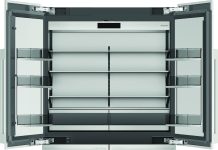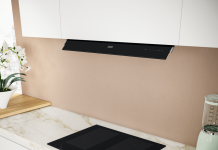Excellent mechanical properties, great lightweight qualities, new innovative machining technologies, advantages for the environment: these are the keys that are leading to a faster and faster diffusion in industrial ambit.
Vittorio Pesce

Magnesium can be considered the metal of the future, especially in the industrial world, for the relevant advantages that it can offer in terms of environmental impact and of reduction of the toxic emissions into the atmosphere in recycling processes. During the world wars of the last century it had been largely used in the military industry (and this, indirectly, confirms its unique properties), but just that use has actually prevented its diffusion in civil ambit. Too many were, in fact, the secrets connected with magnesium and the constraints imposed by Powers that hindered its distribution on a large scale; without neglecting that the productive techniques of that age were not perfected like the current ones, and that fact made the machining of that metal complex.
Today, after over 100 years since the first uses in industrial field, magnesium is “rediscovered” and, thanks to the technological progresses, its diffusion finally proceeds without anymore the obstacles and the hindrances of the past. Certainly, there are still stereotypes to be dispelled, and it is necessary that technicians and designers start studying more in-depth the characteristics of this element and of its alloys. But we are certain that magnesium will be protagonist of the industry of the future and that its diffusion will grant enormous benefits to the mechanical industry, especially referring to some specific applications.
Lightweight and inexhaustible
Magnesium is the absolutely lightest metal, with density corresponding to 1.74 kg/cdm, the lowest in comparison with any metal material for structural uses. It is, for instance, lighter by 30% than aluminium and by 70% than steel; besides, keeping the volume unchanged, it has inferior transport costs just because it is lighter.
In addition to lightweight and inexhaustibility, being among the most widespread elements on the terrestrial surface, it features other interesting characteristics: the resistance to the dynamic and static force; the similar yield strength to aluminium alloys’; the excellent capacity of damping vibrations, of absorbing shocks, of shielding electromagnetic waves, of dissipating heat (higher thermal conductivity than plastic). Besides, it is 100% recyclable, without any degradation of physical properties, and with lower recycling energy costs than other metals. The latter characteristic reduces the environmental impact related to its production, making it much more “ecological” than other materials.
In the last 5 years the use of magnesium and of its alloys in the world industry has tripled, confirming the interest in this new material, deemed “modern” because ecologic and with notable mechanical, chemical and physical properties. Moreover, as already said, the systems to machine it have changed and are totally different if compared with those used dozens of years ago: this has opened – and will open – new applicative horizons. It is in fact well known that industries of international level, like Alenia, KTM, Ducati, Ferrari, Volkswagen, etc., already use magnesium to implement items of all kinds: missile components, gears, chassis, steering wheels, seat structures etc, ; but already several other companies have mobilized to manufacture “cases” for computers, mobile phones and cameras, accessories for bikes, tennis rackets, etc. This demonstrates that the application potentialities, for a skilled and well informed designer, can be endless.
[table id=11 /]
How is it machined?
Magnesium can be machined more easily than other materials, since it can grant low resistance to cutting tools, then possibility of being machined at high cutting speeds, excellent weldability without resistance loss (in controlled atmosphere), good resistance to corrosion (with binding agents) and to ageing.
To implement a magnesium component, we can use the same processes adopted for the other metals: sand and shell casting, die casting (also for complex components with subtle wall), chip machining, extrusion, forging (post-extrusion plastic deformation), welding (in controlled atmosphere) and assembly. These features make it interesting for industry, despite some precautions to be observed since it is a more flammable material than others.
The most used technological process is die casting, especially for the high productivity, the high precision, quality and surface finishing, the possibility of obtaining fine micro-structures, also on thin walls and in complex geometries, the high casting fluidity and the possible speed increments in the casting process up to 50%. As a matter of fact, thanks to the good dimensional stability, the shrinkage is constant and the shrinkage stress is almost absent. Besides, it is possible to use steel dies with extension of their service life, and with energy saving during the process owing to the low thermal dispersion.
Besides standard foundry processes, magnesium components can also be achieved through other technologies, some of which really innovative, like semi-solid casting and/or injection systems (Thixomolding, Rheocasting) that are rapidly and constantly developing. “Thixomolding”, in particular, is an injection moulding system in which magnesium is at the semi-solid state: it allows “processing” spherical balls or powders and manufacturing metal components standing out for high mechanical characteristics, with detailed surface aspects and very subtle thicknesses.
Finally, concerning the stock removal machining, magnesium and its alloys can be machined also at high cutting speeds and with big chip thicknesses, for a reduced tool wear, with the possibility of achieving excellent surface finishing and roughness up to 0.1 micron.
Used in alloys
Like aluminium and other metals, magnesium is used in different alloys in the various casting processes or for the production of billets for the extrusion and the hot forging.
The main binding agents are aluminium, which increases the mechanical resistance, zinc, which improves the elongation, manganese, which raises the resistance to corrosion, zirconium, which refines the grain, copper, which improves the fluidity, calcium, which decreases density.
In general, in die casting processes are used high purity alloys, called “High Purity”, that’s to say with low contents of impurity like iron (within 0.004%), nickel and copper. For most of the applications it is used the AZ91 alloy, ideal for die casting due to the excellent surface finishing of the produced goods.
Magnesium alloys have a specific weight of 1.75÷1.85 kg/cdm that in the case of special or “ultra-light” alloys (for instance magnesium-lithium) can decrease to 1.3 kg/cdm.
They are under development also particular alloys “reinforced” by other elements, which are included in the category of composite materials and are aimed at a rise of the modulus of elasticity and an increase of the resistance, both to corrosion and to creep.
[table id=12 /]
Minor disadvantages
The mechanical characteristics of magnesium are more modest in comparison with other materials. In particular, the tensile strength of traditional magnesium alloys is slightly lower than aluminium alloys’, and the modulus of elasticity is inferior by 36%. Besides, the coefficient of thermal expansion is higher and this is another aspect that can cause criticalities in certain cases. These “inconveniences” can be solved, at least for certain types of use, by redesigning the components, that’s to say increasing sections and optimizing geometries.
In the past magnesium had gained a questionable reputation in terms of resistance to corrosion and this has partly hindered its diffusion, but the development of state-of-the-art protective treatments and coatings, coupled with the availability of high-purity or new composition alloys, permits to overcome this weak point, at least for the majority of uses.
Another aspect worth considering is that traditional magnesium alloys are affected by a drastic deterioration of their mechanical characteristics already at (relatively) low temperatures, fact that reduces their application field. Today, however, are available alloys that far exceed this limitation and that result neatly superior also under other aspects. The cost of such alloys remarkably varies depending on the elements contained; for the alloys with largest utilization is slightly higher than most common aluminium alloys’, but this is compensated by the better workability, which results also in minor tool wear and relevant energy saving.
[table id=13 /]




